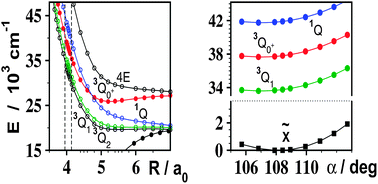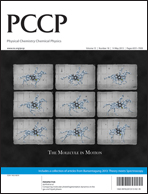Potential energy surfaces for ground and excited electronic states of the CF3I molecule and their relevance to its A-band photodissociation
Abstract
The multireference spin–orbit (SO) configuration interaction (![[X with combining tilde]](https://www.rsc.org/images/entities/char_0058_0303.gif) A1 ground state and vibrational frequency ν3 for the C–I stretch mode agree well with available
A1 ground state and vibrational frequency ν3 for the C–I stretch mode agree well with available

- This article is part of the themed collection: Bunsentagung 2013: 'Theory meets Spectroscopy'

 Please wait while we load your content...
Please wait while we load your content...